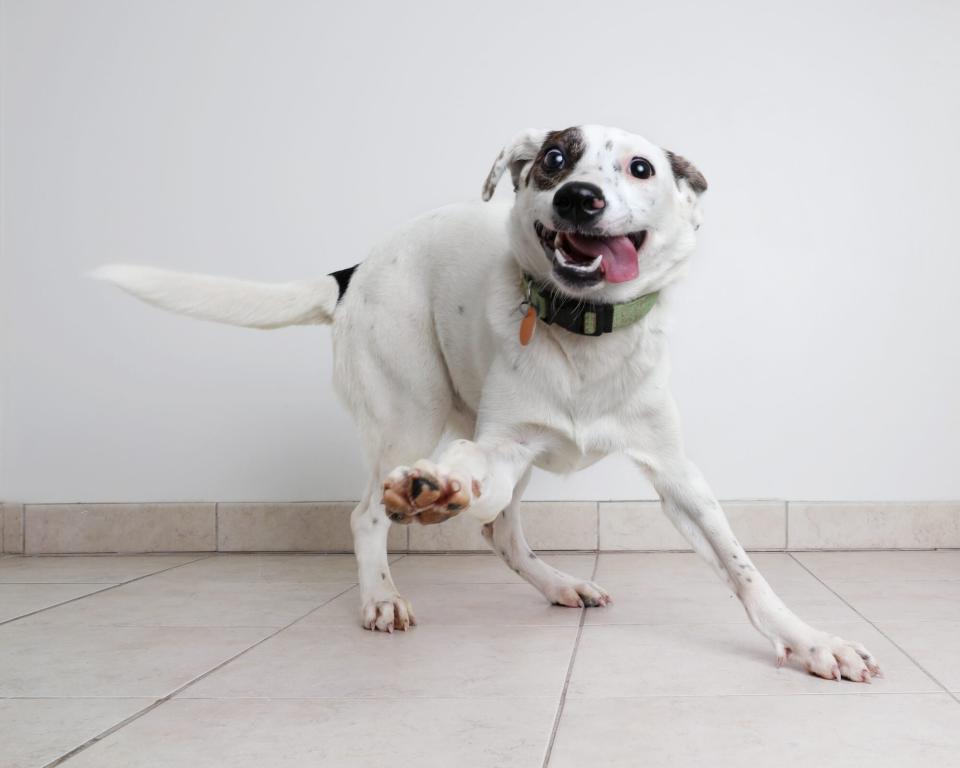Dog Zoomies: What Are They, and Why Do They Happen?

If you're a dog parent, then chances are you've seen your pooch get a case of the "zoomies." Whether it's after a bath or when you present them with a favorite treat, some dogs have a tendency to dart in circles around a room when they get overly excited. "The technical term for this behavior is Frenetic Random Activity Periods (FRAPs)," says professional dog trainer Andrea Arden. "These are random bursts of energy where a dog runs about with more enthusiasm than usual."

GeorgePeters / Getty Images
While few studies have been done on the causes of zoomies, Arden says they occur most often after a bath and between 7 and 8 p.m., which she calls the "doggy 'witching' hour." And for as frenzied as your pooch may seem during these spurts, Arden says they're perfectly normal for dogs of all ages—especially puppies. "There are very few dogs that don't have an occasionally case of the zoomies," she says. "Zoomies present more frequently in younger dogs and dogs with higher energy, but even lower key adult dogs sometimes get their zoom on."
Ever wondered why your dog gets the zoomies and what you can do when they have them? Read ahead for five tips from Arden on how to handle canine FRAPS.
Related: The Most Confusing Pet Behaviors, Explained
Give them more exercise.
Providing a dog with age- and health-appropriate exercise is essential to preventing a whole slew of behavioral and health problems, and Arden says zoomies often suggest a need for more physical activity. "While these bursts of energy are normal, they might indicate that the dog needs more outlets for their energy," she explains. "Make sure to schedule numerous appropriately vigorous play sessions with your dog throughout the day and be sure they are getting enough walks."
Offer more mental stimulation.
Much like physical activity, Arden says frequent cases of the zoomies could mean that your dog needs more mental stimulation at home, too—especially when you're not home to entertain them. "Supply your dog environmental enrichment in the home when you can't be there to spend time with them," she says. "Consider feeding them from food-stuffed toys or provide them with other interactive items to keep them mentally busy when you're gone."
Don't zoom along.
It might seem like a good idea for humans to play along with their dogs while they're zooming, but Arden says it's not advisable in most cases. "Even the most mannerly, social dog may be on such a 'high' that they may forget their manners if you play along," Arden says. "Dogs, especially young ones, may be less able to exhibit appropriate impulse control and get mouthier when they are zooming about."
Make sure their bladders are empty.
For as cute as zoomies may look, Arden says they are counter-productive to certain training techniques—especially housebreaking. "If you can predict the typical times during the day when these bursts might occur, take your pup to her toilet area first," she advises. "Take precaution to not let your pup run about at any time when you think they might have an accident."
In the end, don't worry.
Above all else, Arden says it's important to remember that for as maniacal as FRAPs might make your dog appear, they aren't cause for concern. "As long as the dog isn't being disruptive or a danger to themselves or anyone else, we encourage people to let zoomies happen," she says. "It's just part of being a dog and releasing energy."

